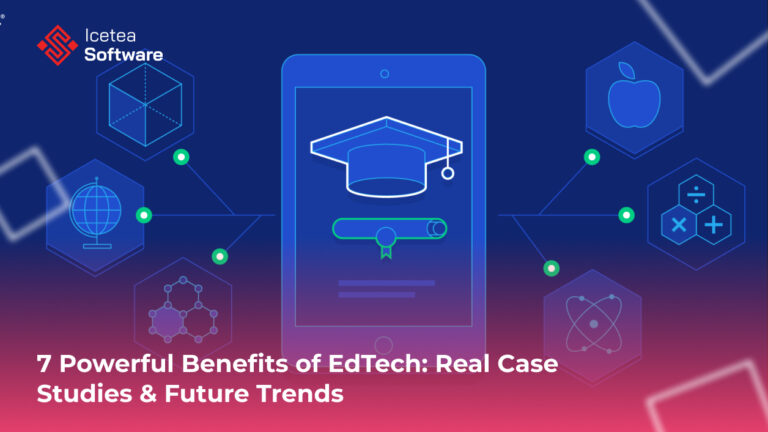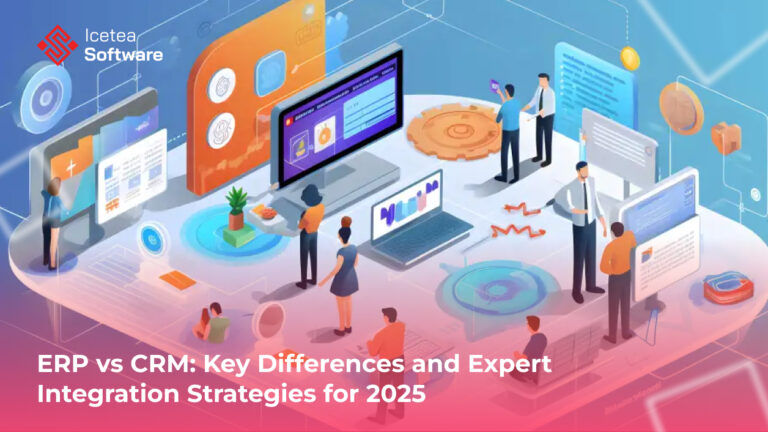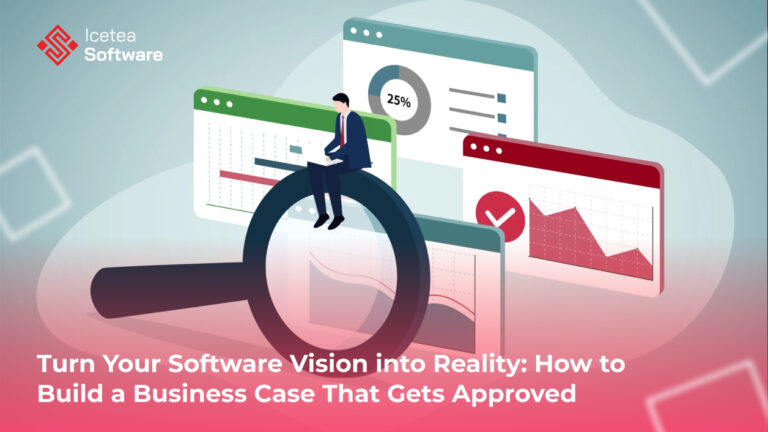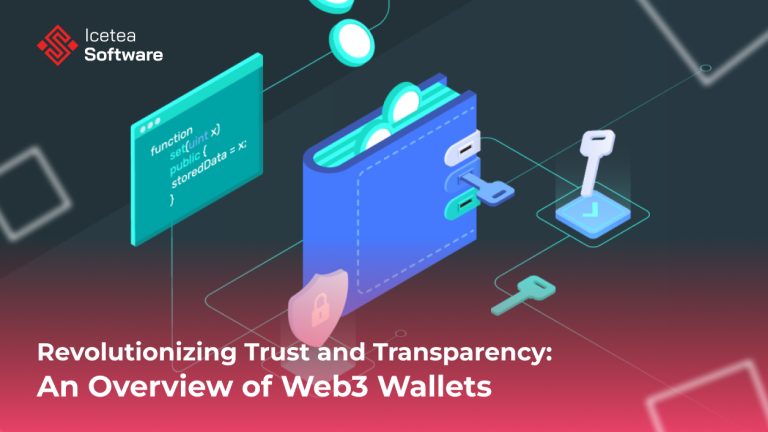Top Tech Trend 2025: How AI and Edge Computing Is Powering the Future
- Introduction
- Why AI and Edge Computing is the Perfect Match
- The Key Drivers of AI and Edge Adoption in 2025
- Industries Transformed by AI and Edge Computing in 2025
- Challenges Facing AI and Edge Computing in 2025
- The Future of AI + Edge Computing Beyond 2025
- Best Practices for Businesses Embracing AI + Edge in 2025
- Final Thoughts
- About Icetea Software
Introduction
As 2025 unfolds, the technology landscape is undergoing a dramatic transformation. Among the most groundbreaking shifts is the convergence of Artificial Intelligence (AI) and Edge Computing. While AI continues to revolutionize how businesses and individuals interact with technology, edge computing pushes data processing closer to where it is generated—whether in factories, vehicles, healthcare devices, or smart cities. Together, these two forces are not just reshaping IT infrastructure, but also creating entirely new opportunities for efficiency, security, and innovation.
This blog will explore how AI and Edge Computing is becoming the defining tech trend of 2025, why it matters, key industries driving adoption, challenges that remain, and what the future holds.
Why AI and Edge Computing is the Perfect Match
AI requires massive volumes of data to generate insights and make decisions in real time. Traditionally, this data would be sent to centralized cloud servers for analysis. However, with billions of connected devices and sensors producing continuous streams of data, cloud-only approaches often struggle with:
- High latency: Delays in transmitting data to and from the cloud can hinder time-sensitive applications such as autonomous driving or remote surgery.
- Bandwidth costs: Transmitting huge amounts of raw data consumes enormous bandwidth and energy.
- Privacy concerns: Sensitive data traveling long distances increases the risk of breaches.
Edge computing addresses these issues by processing data locally—at or near the source—before sending only the necessary insights to the cloud. When combined with AI, this approach enables:
- Real-time decision-making with ultra-low latency.
- Reduced costs by minimizing unnecessary data transmission.
- Improved security through local data processing.
- Better scalability as billions of IoT devices come online.
In short, AI provides intelligence, while edge computing ensures efficiency and responsiveness. Together, they create a synergy that is perfectly suited for the digital economy of 2025.
The Key Drivers of AI and Edge Adoption in 2025
Several factors are accelerating the adoption of AI at the edge:
1. Explosion of IoT Devices
From smartwatches and connected cars to industrial sensors and drones, IoT devices are multiplying at an unprecedented rate. IDC predicts that by 2025, there will be over 75 billion IoT devices worldwide. These devices require fast, localized AI-driven decision-making, which is only feasible with edge computing.
2. Demand for Real-Time Insights
Businesses across industries now expect instant intelligence. For example, retailers want real-time customer behavior analysis, logistics companies need immediate shipment tracking, and healthcare providers must monitor patients continuously. AI at the edge makes this possible.
3. Advances in Edge Hardware
The rise of specialized chips like AI accelerators, GPUs, and TPUs designed for edge environments has made it feasible to run complex AI models on small devices with limited power.
4. Growing Privacy Regulations
With strict data protection laws like GDPR in Europe and similar regulations in other regions, keeping sensitive information local has become a compliance requirement. Edge AI offers a privacy-friendly solution.
5. Hybrid Cloud Architectures
The future is not edge versus cloud—it’s edge + cloud. Organizations are adopting hybrid approaches that combine centralized cloud resources for large-scale training with edge devices for inference and execution.
According to Gartner’s research on edge AI adoption, by 2025 over 50% of enterprise data will be processed outside traditional data centers.
Industries Transformed by AI and Edge Computing in 2025
1. Healthcare
Healthcare is one of the industries most deeply transformed by AI at the edge. In 2025, hospitals and clinics are deploying AI-enabled medical devices that process data locally to:
- Monitor patients in real time through wearables.
- Support remote surgery with ultra-low latency.
- Detect anomalies in medical imaging without uploading sensitive scans to the cloud.
For example, an AI-powered heart monitor can analyze patterns locally and alert doctors immediately if it detects irregularities, potentially saving lives.
2. Manufacturing and Industry 4.0
Factories equipped with AI-enabled sensors and robotics are using edge computing to:
- Predict machine failures through predictive maintenance.
- Optimize production lines in real time.
- Reduce downtime and waste.
By 2025, smart factories powered by AI and edge are expected to deliver billions in cost savings and efficiency gains globally.
3. Smart Cities
Urban areas are rapidly adopting AI at the edge to manage infrastructure, reduce congestion, and improve safety. Applications include:
- Traffic management using AI cameras to control lights dynamically.
- Public safety monitoring with real-time video analytics.
- Energy optimization in buildings and public utilities.
Cities like Singapore, Tokyo, and Barcelona are already leading the way, with many others set to follow in 2025.
4. Automotive and Mobility
The future of transportation relies heavily on edge AI. Autonomous vehicles cannot afford to send every piece of data to the cloud—they need instant processing on the road. AI at the edge enables:
- Collision avoidance in milliseconds.
- Route optimization.
- Real-time communication between vehicles (V2V) and infrastructure (V2I).
By 2025, edge-powered AI is becoming a core component of not just self-driving cars but also smart public transport and logistics fleets.
5. Retail and Customer Experience
Retailers are increasingly turning to AI and edge to enhance the shopping experience. Examples include:
- Smart shelves that track inventory and trigger automatic reorders.
- Personalized in-store promotions based on real-time customer behavior.
- Automated checkout systems that use AI vision at the edge to recognize products instantly.
This trend not only boosts efficiency but also redefines customer engagement.
Challenges Facing AI and Edge Computing in 2025
While the potential is enormous, businesses must overcome several challenges:
1. Complexity of Deployment
Deploying AI at the edge requires expertise in AI modeling, hardware integration, and edge orchestration. Many companies still lack the skill sets needed.
2. Security Risks
Although edge computing enhances privacy, distributed systems also increase the attack surface. Each device must be secured, patched, and monitored to prevent vulnerabilities.
3. Energy Consumption
Running AI models at the edge requires power-efficient designs. For battery-powered devices, energy optimization is critical.
4. Interoperability
The ecosystem of edge devices, operating systems, and AI frameworks remains fragmented. Achieving interoperability is essential for scaling.
5. Cost Considerations
While long-term savings are significant, the upfront investment in AI-enabled edge infrastructure can be substantial, especially for small and mid-sized businesses.
The Future of AI + Edge Computing Beyond 2025
Looking ahead, AI + edge will continue to evolve in exciting ways:
- Federated Learning: AI models will be trained across distributed edge devices without transferring raw data, further enhancing privacy and efficiency.
- 5G and Beyond: With ultra-fast connectivity, edge devices will work seamlessly with centralized cloud systems.
- AI Model Optimization: Advances in lightweight AI models will make it possible to run powerful algorithms even on low-power devices.
- Edge-as-a-Service (EaaS): Just like cloud services, companies will offer edge computing as a managed service, lowering entry barriers for organizations.
- Integration with Other Technologies: AI + edge will intersect with blockchain for trust, AR/VR for immersive experiences, and quantum computing for advanced simulations.
By 2030, the majority of data will be processed at the edge rather than in centralized data centers, marking a paradigm shift in IT infrastructure.
Best Practices for Businesses Embracing AI + Edge in 2025
For organizations planning to adopt this trend, the following best practices can ensure success:
- Start with Use Cases: Identify specific, high-value use cases where edge AI can deliver immediate impact, such as predictive maintenance or customer experience enhancements.
- Invest in Skills and Partnerships: Build internal expertise or partner with specialized vendors to handle the complexity of deployment.
- Prioritize Security from Day One: Implement encryption, authentication, and regular updates to protect distributed devices.
- Think Hybrid: Use the cloud for training large AI models and edge for real-time inference.
- Measure ROI Continuously: Track performance improvements, cost savings, and customer satisfaction to refine strategy.
Final Thoughts
In 2025, the combination of AI + Edge Computing is more than just a technological advancement—it is the foundation of the next digital revolution. From healthcare and manufacturing to retail and smart cities, industries are already reaping the benefits of faster insights, improved security, and greater efficiency.
However, success depends on overcoming challenges such as deployment complexity, interoperability, and energy constraints. Businesses that can navigate these challenges while embracing innovation will gain a decisive competitive edge.
As we move deeper into the decade, AI + edge will no longer be a niche trend—it will be the default architecture of the digital world. For forward-thinking organizations, the time to invest is now.
About Icetea Software
Icetea Software is a Vietnam-based technology firm specializing in scalable, secure, and future-ready solutions in Web3, AI, and digital transformation. With operations in Vietnam and Korea, the company supports global enterprises and startups through end-to-end technology services, infrastructure development, and innovation consulting.
𝗜𝗰𝗲𝘁𝗲𝗮 𝗦𝗼𝗳𝘁𝘄𝗮𝗿𝗲 – Revolutionize Your Tech Journey!
Website: iceteasoftware.com
LinkedIn: linkedin.com/company/iceteasoftware
Facebook: Icetea Software
X: x.com/Icetea_software








